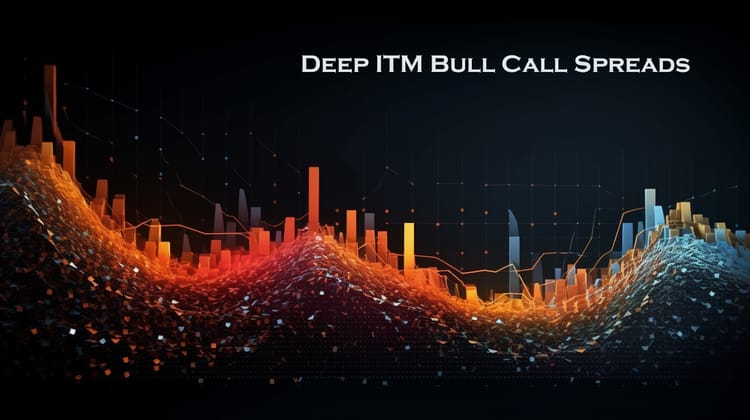Options Trading 101: A Comprehensive Guide for Beginners

Let's start with the basic concepts about Options -
What are Options?
Options are a type of financial derivative used in the stock market. They give the holder the right, but not the obligation, to buy or sell an underlying asset (usually a stock) at a predetermined price (the strike price) on or before a predetermined date (the expiration date).
There are two types of options:
Call Options: These give the holder the right to buy the underlying asset at the strike price before the expiration date. Traders buy call options when they predict the asset's price will rise above the strike price before the option expires.
Put Options: These give the holder the right to sell the underlying asset at the strike price before the expiration date. Traders buy put options when they predict the asset's price will fall below the strike price before the option expires.
The cost to buy an option is called the option's premium. It depends on several factors, such as the asset's current price, the strike price, the time until expiration, and the asset's volatility.
Important Options Components
When dealing with options, there are several important components and terms you need to understand. Here are some of them:
Underlying Asset: This is the financial instrument (e.g., stock, futures, index, etc.) that the option gives you the right to buy or sell.
Strike Price: The predetermined price at which the holder of the option can buy (in the case of a call option) or sell (in the case of a put option) the underlying asset.
Expiration Date: The date on which the option contract expires. After this date, the option holder no longer has the right to exercise the option.
Premium: The price you pay to buy an option. The premium is determined by various factors, including the underlying asset's price, the strike price, the time remaining until expiration, the volatility of the underlying asset, and the risk-free interest rate.
Intrinsic Value: This is the difference between the underlying asset's current price and the option's strike price. For call options, intrinsic value is the current price minus the strike price (but not less than zero). For put options, it's the strike price minus the current price (but not less than zero).
Time Value: This is part of the option premium that is attributable to the amount of time remaining until the expiration of the option contract. Time value is essentially the risk premium the option seller requires to provide the option buyer the right to buy/sell the asset up to the expiration date.
Volatility: This measures the amount by which the price of the underlying asset is expected to fluctuate during a given period. Higher volatility increases the option premium because it increases the likelihood that the option will end up in-the-money (i.e., with intrinsic value) at expiration.
Contract Size/Lot: An option contract usually represents 100 shares of the underlying stock. So, if you buy 1 option contract, you have the right to buy or sell 100 shares of the stock.
In-the-Money (ITM), At-the-Money (ATM), Out-of-the-Money (OTM): An option is ITM if exercising it would lead to a positive cash flow. For call options, this means the underlying price is above the strike price. For puts, it's when the underlying price is below the strike price. An option is ATM when the underlying price equals the strike price. An option is OTM when exercising it would lead to a negative cash flow.
Open Interest: The total number of outstanding options contracts in the market.
Let's look at the Basic Options Strategy -
Vertical Bull Call Spread
A Vertical Bull Call Spread (often referred to as a Bull Call Spread) is a type of options strategy that an investor uses when they believe the price of the underlying asset will rise moderately in the near future. It involves two call options on the same asset and with the same expiration date, but with different strike prices.
Here's how it works:
- The investor buys a call option with a lower strike price.
- At the same time, they sell (write) another call option on the same asset, with a higher strike price.
The objective is to offset the cost of buying the first call option by selling the second. Because the second option has a higher strike price, it will be less expensive, thus the total investment in the trade will be the difference in premiums between the two options.
The maximum profit from this strategy is realized if the price of the underlying asset rises to or above the strike price of the second option at expiration. The profit is equal to the difference between the two strike prices, minus the net cost of entering the trade.
The maximum loss is the net premium paid at the start of the trade. This happens if the price of the underlying asset falls below the strike price of the bought call option at expiration. In other words, if the underlying asset's price at expiration is less than the lower strike price, both options expire worthless and the entire investment in the options is lost.
Overall, a bull call spread allows an investor to limit both their potential gain and potential loss. It's a way to participate in a bullish outlook (hence the name "bull" call spread) without the full risk of just buying a call option outright.
Conclusion
In conclusion, options provide a robust and versatile instrument to diversify your trading strategies. They not only offer opportunities for speculative gains but are also an effective tool for risk management. Options allow you to hedge against market fluctuations and secure your positions, whether you're betting on the market going long or short. Remember, as with all investment strategies, understanding the nuances and risks associated with options trading is crucial for success.
Disclaimer
The contents of this article are strictly for informational and educational purposes only. They do not constitute financial advice or a recommendation to buy or sell any stock, options, or other financial instruments. Investing in stocks and options involves significant risk and is not suitable for all types of investors.
The examples and scenarios provided in this article are hypothetical and for illustrative purposes only. They do not represent actual trading or forecast future performance. The accuracy, completeness, or relevance of the information provided is not guaranteed.
Investors should consider their financial situation, risk tolerance, and investment objectives before making any investment decisions. Past performance of any securities or strategies does not guarantee future results or success.
Investors should always consult with a licensed and qualified financial advisor or conduct their own thorough research before making investment decisions. The author(s) and the publisher of this article disclaim any liability for any loss that may occur from reliance on the information provided.
No part of this article should be interpreted as legal or financial advice. The users are solely responsible for the consequences of their own investment decisions.*

